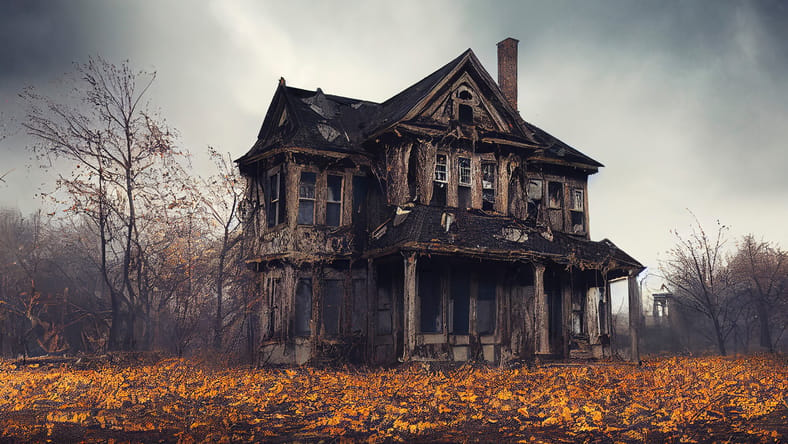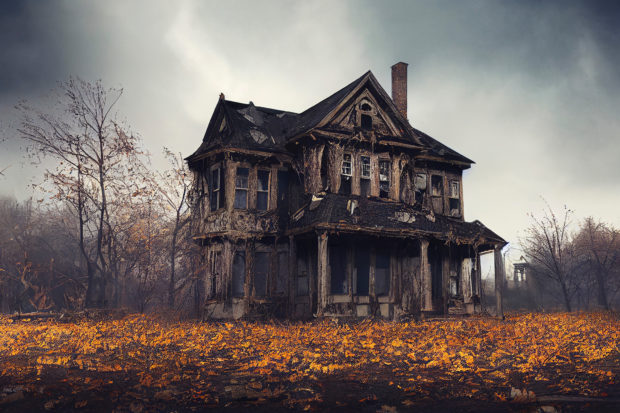Classic Haunted Houses Were Actually Created During The Great Depression To Stop Halloween Violence And Vandalism

From 1929 to 1939, the Great Depression devastated the entire nation. After the stock market crash of 1929 sent Wall Street into panic mode, nearly every sector was affected.
Investments and consumer spending plummeted, industrial output declined, and unemployment rates skyrocketed.
So, amidst this economic turmoil, the public just could not handle any more devastation. And around Halloween time, destruction and violence became a huge concern.
Prior to the Great Depression, the spooky holiday had been known as a night of celebration and rebellion for both children and adults. Plus, pulling “tricks” on Halloween was even viewed as a positive way for young boys and men to let loose.
The tricks and pranks ranged in severity– including everything from ripping neighbors’ gates right off of their hinges to actually stealing dead bodies.
And in 1879, a group of two hundred Kentucky boys pulled a legendary trick. On Hallows Eve, they laid a fake dummy body on the railroad tracks, threw the conductor into a panic, and caused the train to screech to a stop.
“This is the only evening on which a boy can feel free to play pranks outdoors without danger of being ‘pinched,’ and it is his delight to scare passing pedestrians, ring doorbells, and carry off the neighbors’ gates,” a boys’ craft guide even wrote at the time.
Once the economic disaster of 1929 occurred, though, the Halloween antics only escalated. In 1933, for example, packs of teenage boys actually sawed telephone polls, flipped cars, and vandalized neighborhoods throughout the country.
And as the Great Depression years continued on, the October holiday began being referred to as “Black Halloween.”

Mikiehl Design – stock.adobe.com – illustrative purpose only
Sign up for Chip Chick’s newsletter and get stories like this delivered to your inbox.
This pushed some cities to even consider banning Halloween altogether in hopes of saving residents from dealing with even more chaos. However, most communities came up with an ingenious way of redirecting that angsty teen behavior.
Neighbors started to band together and organize Halloween activities that would keep young people off of the streets. These events included trick-or-treating parties, costume parades, and the famous haunted house.
The idea of hosting haunted attractions had already picked up some steam in Europe– beginning with Marie Tussaud’s wax museum in the 1800s. But, the attractions had not yet hit America in such a widespread capacity until the Great Depression.
The efforts were small, low-budget, and non-profit– organized by residents and even hosted at their own homes. And they were an immediate hit among the kids.
So, as years passed, other organizations began to take notes. Haunted attractions became a great way to generate money for fundraisers and a fantastic outlet for budding entrepreneurs to turn a profit.
And ever since then, haunted houses have become a staple characteristic of the holiday. In fact, according to American Haunts, there are over one thousand and two hundred haunted attractions in the United States that currently charge admission fees.
These attractions now have much larger budgets and offer more elaborate immersive experiences year after year– drawing in locals and tourists alike.
But, just like during the Great Depression, parents still put on smaller haunts for neighborhood children and teens– keeping the original tradition alive.
If true crime defines your free time, this is for you: join Chip Chick’s True Crime Tribe
Size Does Matter: How To Choose The Perfect Rug For Every Room In Your Home
More About:Freaky





